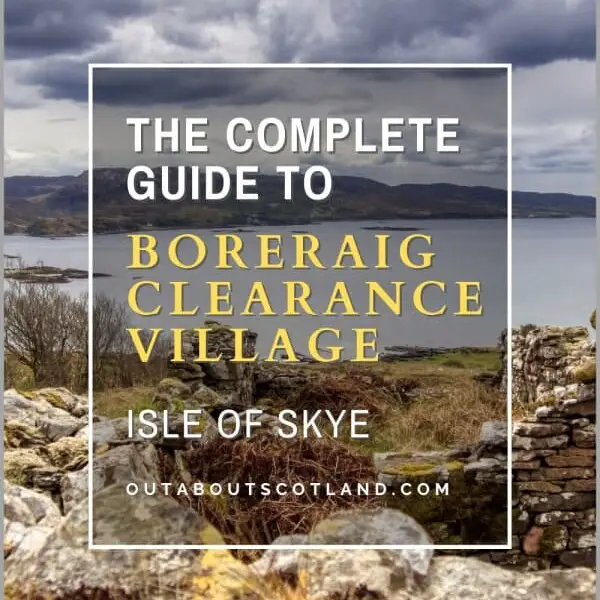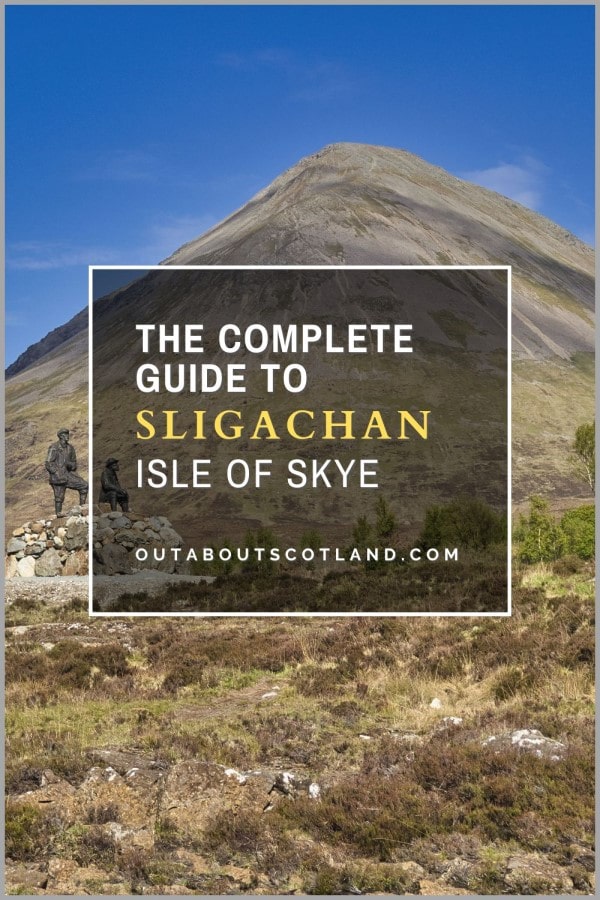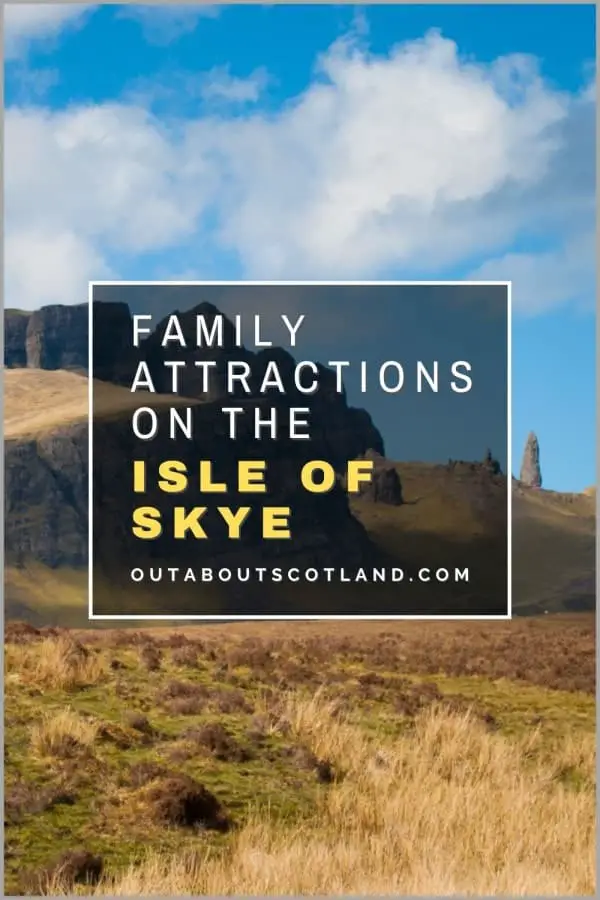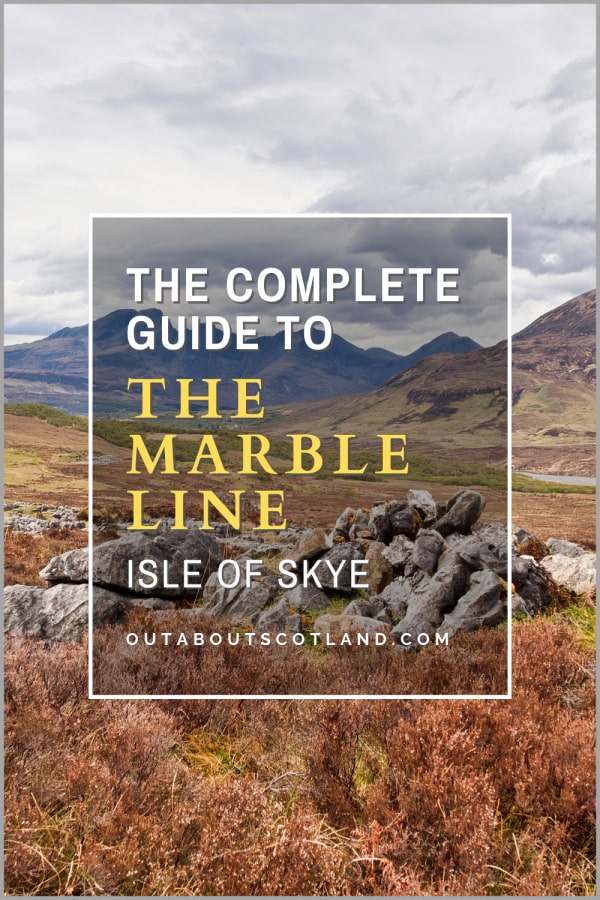The remains of long-abandoned villages can be seen all over the Isle of Skye, but Boreraig, situated 4 1/2 miles south of Broadford, is perhaps the most hauntingly beautiful. Not much remains of the village other than a few low-lying walls, but there’s enough evidence of the buildings to appreciate that this was once a flourishing settlement.
Visiting Boreraig takes walkers on a 9-mile circular trail from Broadford to the shore of Loch Eishort, across heather-covered moorland on rough paths that can be hard-going but offer stunning views along the way.
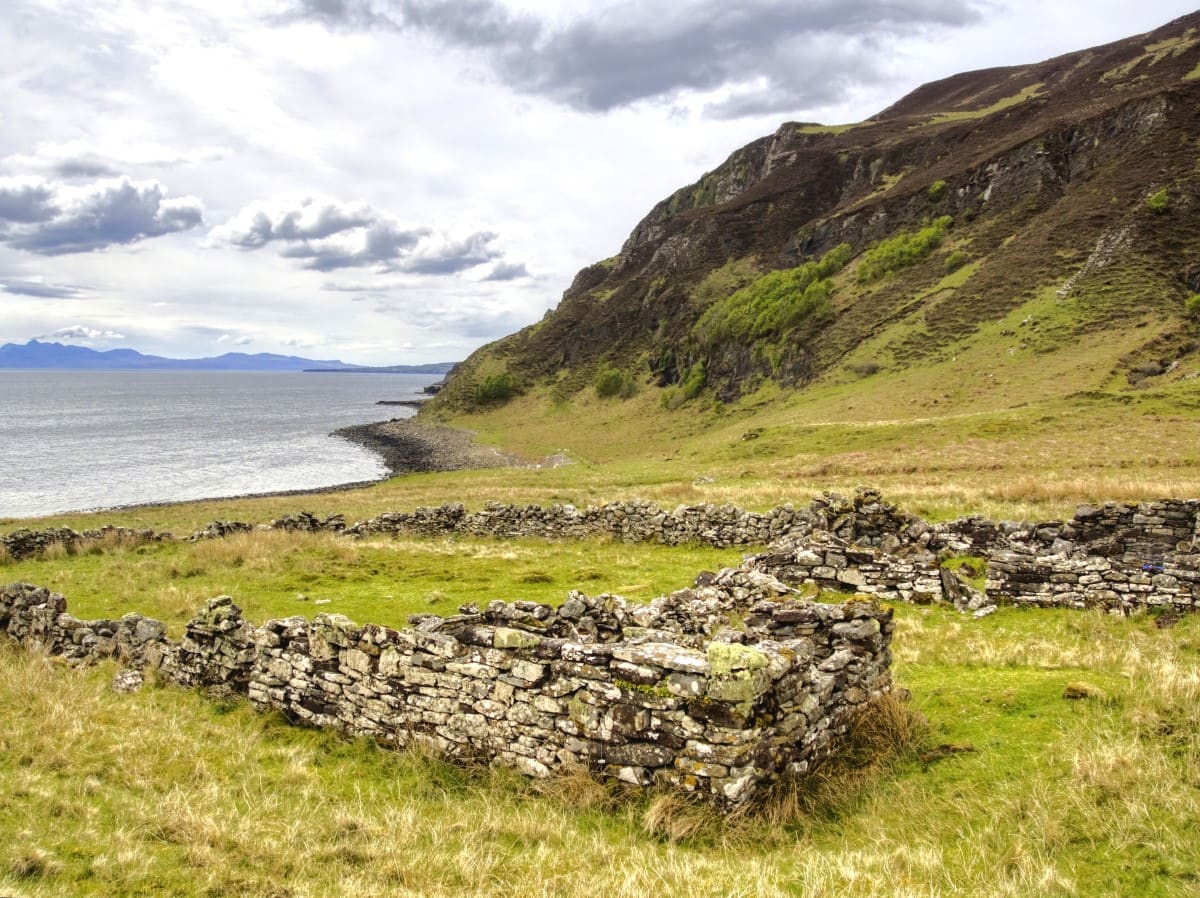
| Address: | Boreraig, Isle of Skye, IV44 8RN |
| Opening Hours: | 24/7 |
| Admission Price: | Free |
| Parking: | Free off-road parking |
| Contact: | N/A |
| Facilities: | None |
| Photos: | Virtual Tour YouTube Video |
Overview
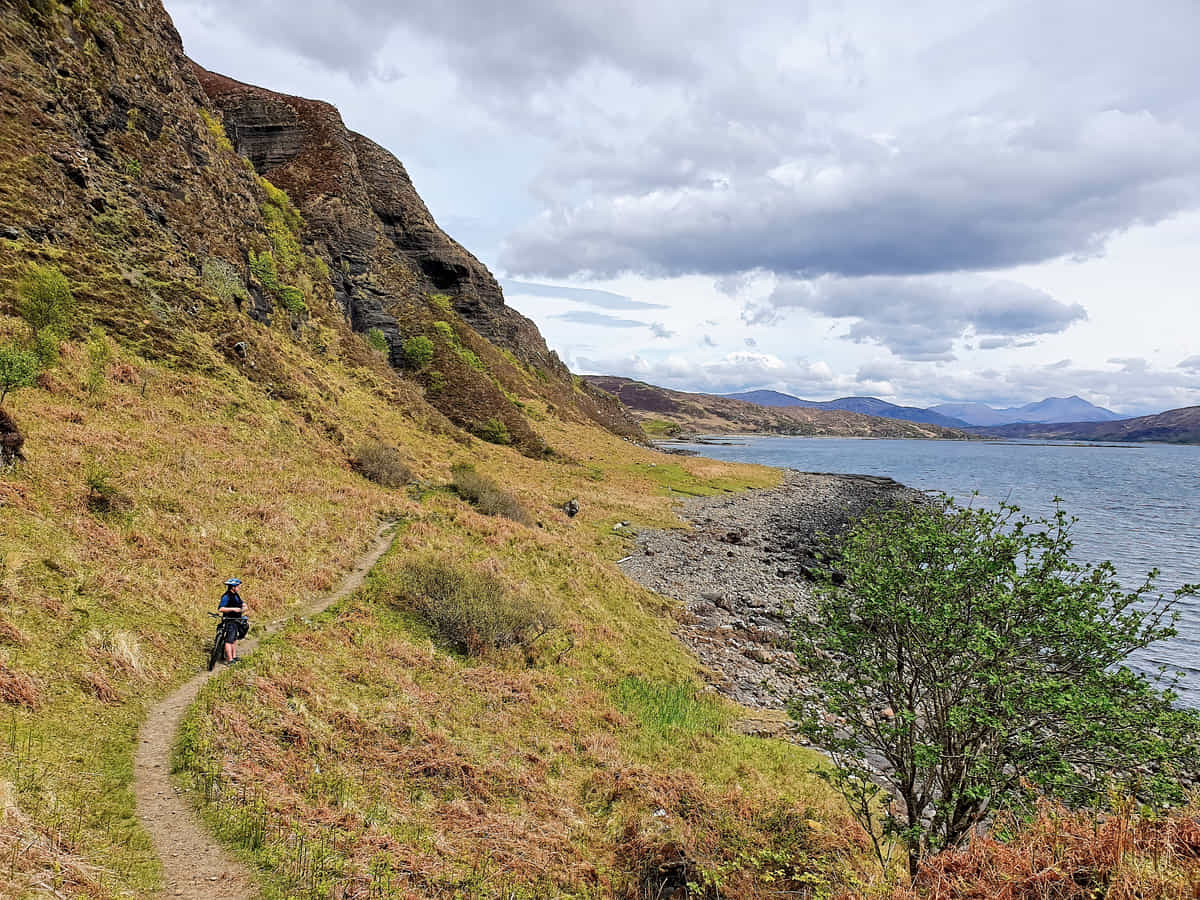
Boreraig is a remote, serene location on the Isle of Skye. Once a thriving crofting township, it was tragically cleared during the Highland Clearances in the 19th century. Today, its stone ruins, nestled amidst rugged hills and overlooking the tranquil Loch Eishort, bear silent testimony to its past, offering a poignant experience for visitors willing to take the long walk to get there.
Of all the places you can visit on the Isle of Skye, the village of Boreraig has to be one of the remotest. It’s certainly not an easy place to get to thanks to a distinct lack of roads, and there are few mentions of it in Skye’s guidebooks. The remains of the historic clearance village are located in a sweeping grass plain at the foot of hills that loom over Loch Eishort and the Sleat Peninsula, roughly 5 miles south of Broadford.
Although Broadford is a small village, its location on the A87, just 9 miles from the Skye Bridge, makes it a good place to park the car for walks into the heartland of southern Skye, especially for anyone adventurous enough to tackle a hike into the treacherous Cuillin mountains.
To the south of Broadford lie the shores of Loch Slapin, which can be accessed via the B8083, with Loch Eishort located immediately to the southeast. This corner of Skye is almost entirely uninhabited and has few roads, but access is possible thanks to a rough trail that winds its way from the B8083 heading south out of Broadford.
Walking this trail is a genuine pleasure from start to finish as it’s basically broken into two halves, the first of which is the remnant of an abandoned railway line that was used to transport marble, and the second being the roughshod path that joins the railway to Boreraig.
This footpath is stony, narrow, and quite steep in places, so it’s tough-going unless you’re wearing decent boots (see my recommended waterproof hiking boots if you don’t have a pair yet). The first section along the Marble Line isn’t too bad as it’s relatively flat, but once you get near Boreraig, it becomes a little bit of a quagmire, especially in winter.
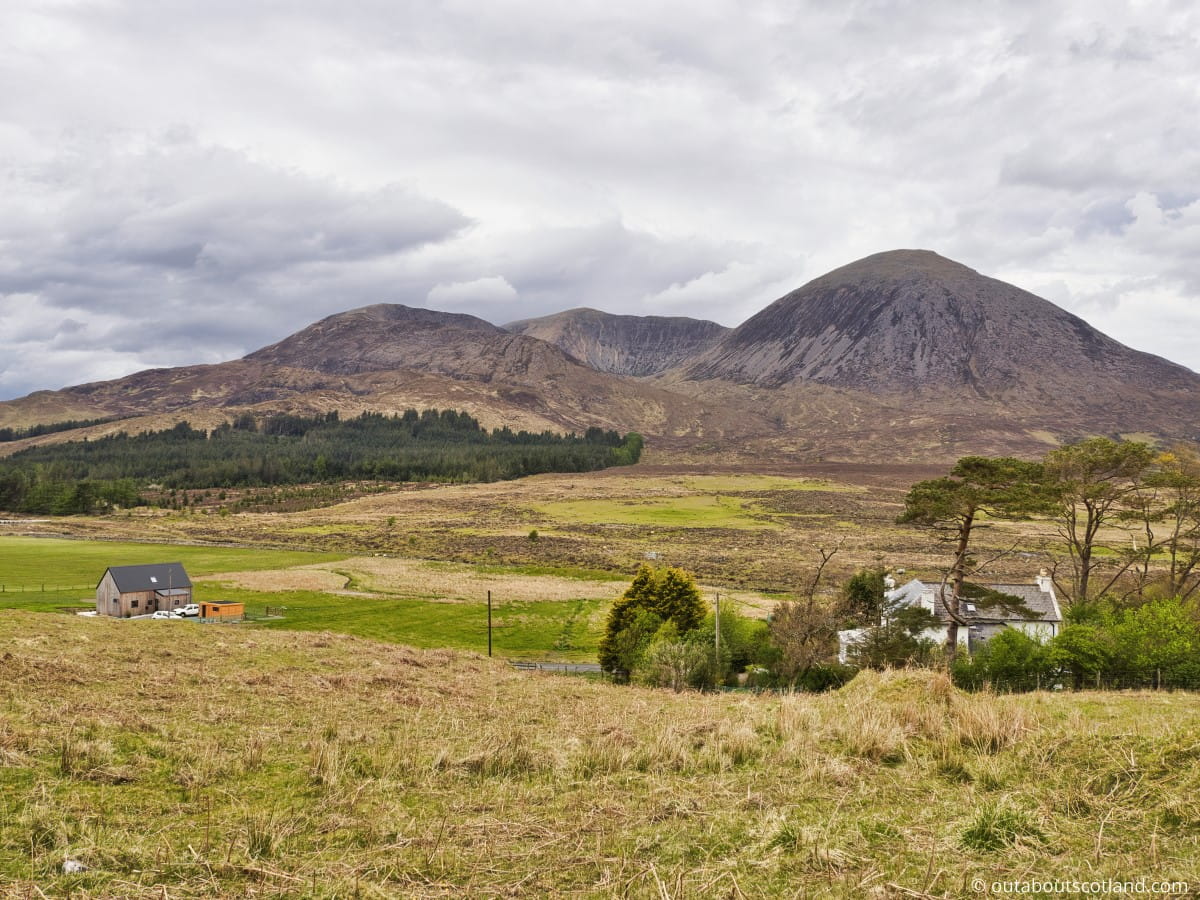
Along the way, the 5-mile path crosses heather-covered moorland as it winds its way between a series of low-lying hills that are a haven for wildlife. There’s a good chance of spotting eagles and buzzards soaring overhead, so you might consider keeping a pair of binoculars to hand (see my reviews of recommended binoculars) or at least snapping a telephoto zoom onto your camera.
After around 2 hours (if starting from Broadford), you’ll reach the shore of Loch Eishort and the gently sloping grass plain where Boreraig is situated. Not much remains of the settlement now, other than a few ramshackle walls and the ruins of half-fallen stone houses. At its peak in the 1700s, there were 22 families living in Boreraig, yet they had all left by the mid-1800s.
That’s due to the ravages of the Highland Clearances, one of the most brutal times in Scotland’s history when hundreds of thousands of people were forcibly driven out of their ancestral homes. The entire story is best summed up by reading Wikipedia, but it basically stems from the aftermath of the Jacobite uprising of 1745, when Highland clans joined forces under the banner of Charles Edward Stuart in an attempt to reclaim the throne in the Stuart name.
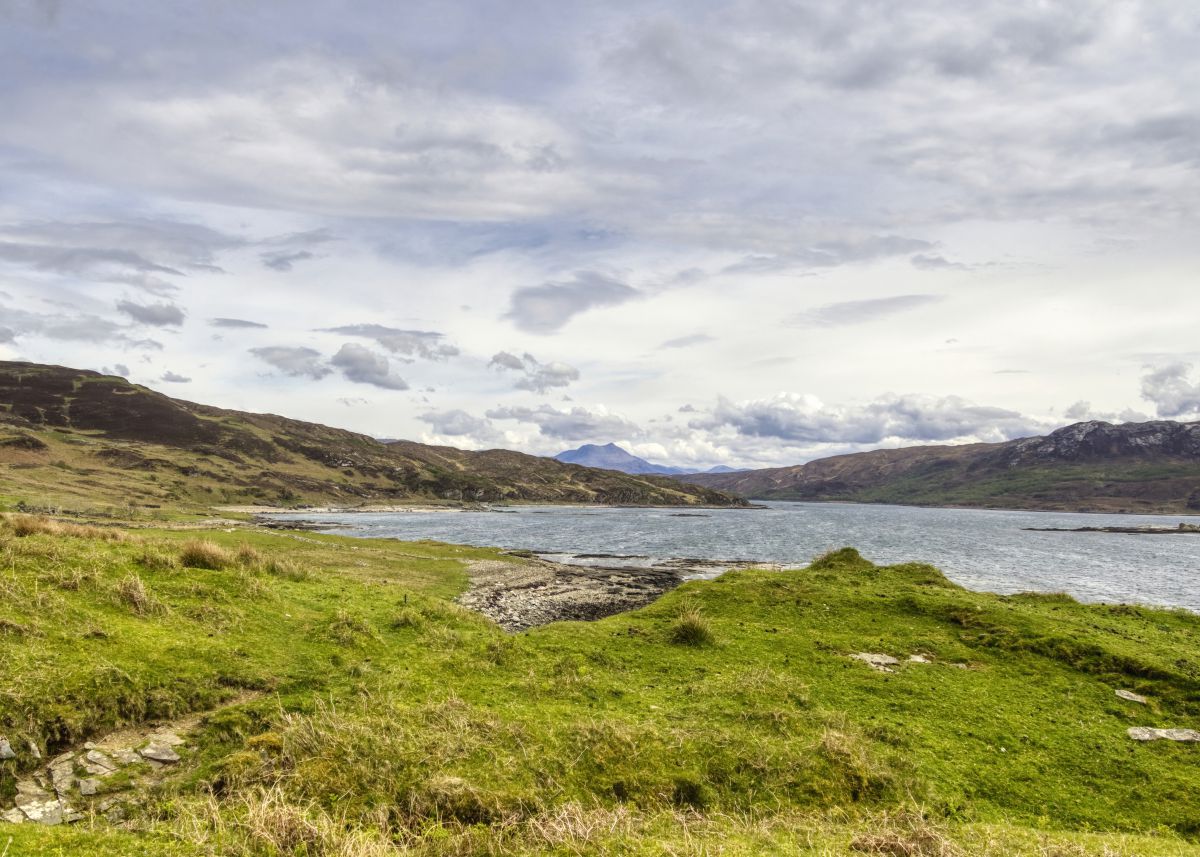
The Jacobites were defeated, and in retribution, the Highlanders were subjugated in a number of ways, including by pushing out crofters to make way for sheep farming, which was more profitable for the landowners. The purge was fast and unrelenting, and within a hundred years, the ancient culture of the Highlands was lost forever, with entire families forced to leave their homes to either emigrate or relocate to the cities.
What remains of their legacy is a collection of ruined dwellings stretching across the Highlands and Islands of Scotland, and Boreraig is just one such example. Sitting among the ruins of the village is a strange experience. It’s a haunting place, yet it’s also utterly beautiful, and I have to admit that while I was there, I became slightly envious of the people who woke up to such stunning views every morning.
The Sleat Peninsula, which is on the other side of the body of water, frames some tiny islands that are in the middle of the loch. The ruins of Dunscaith Castle can just about be seen to the southwest, and the Allt na Peighinn waterfall is visible to the east. The shoreline around Boreraig is flat and the water is shallow, so it would be a perfect place to explore in a kayak.
Those on foot, meanwhile, can follow a track that winds its way west towards Suisnish, which is the location of another clearance village, though there are no remains of it still standing today.
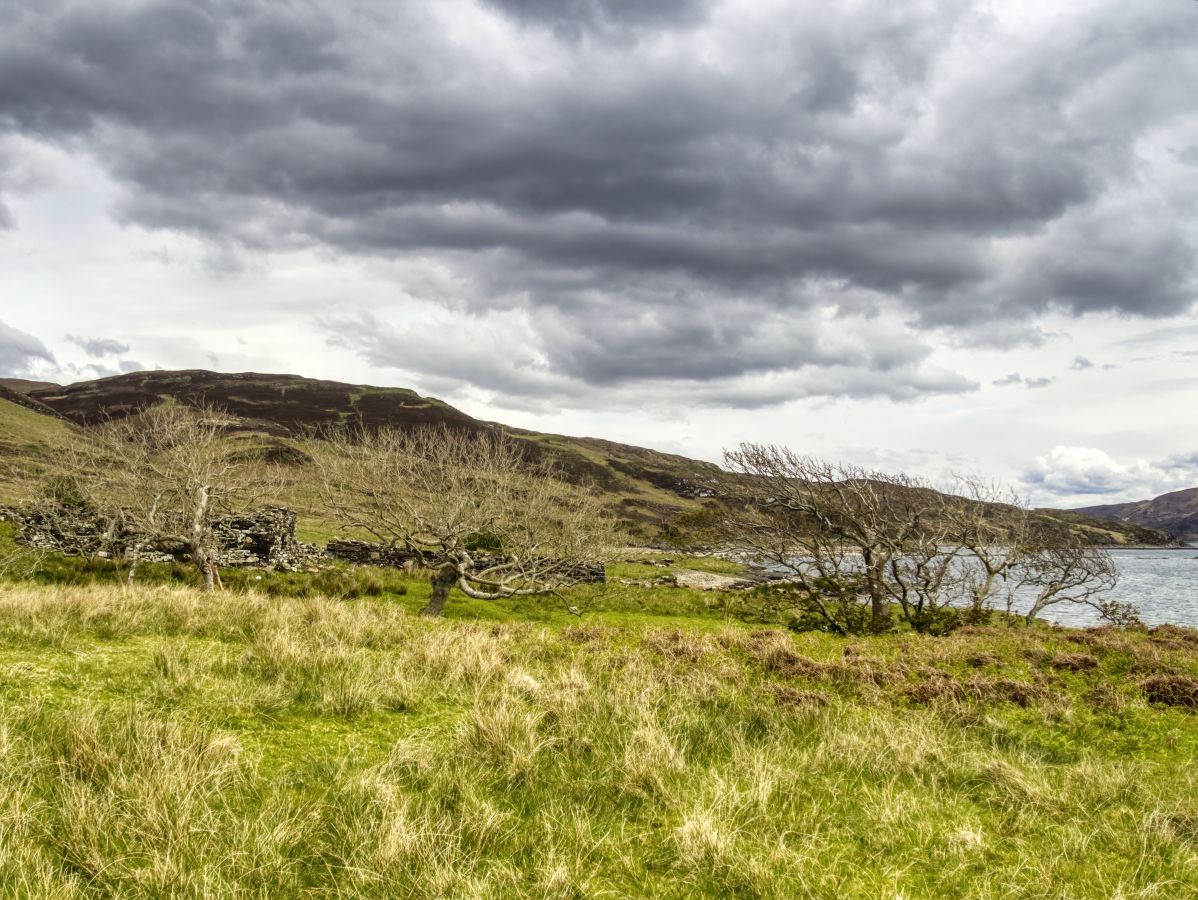
The Highlights
1: The walk from Broadford to Boreraig is a must-do if you’ve had enough of coachloads of noisy tourists. Because most visitors are busy at The Storr and The Quiraing, this region of Skye is blissfully quiet yet has some of the finest views on the island.
2: Walking the entire route from Broadford means you’ll be able to follow the historic Marble Line, which is a long-abandoned cargo railway that’s surrounded by the breathtaking Red Cuillin Mountains. The scenery in this part of Skye is astonishing and offers a great way to see a region that is otherwise easy to miss during a visit to the island.
3: The remains of the village are very atmospheric, especially with the gleaming waters of Loch Eishort framing the buildings in the background. If you want to imagine how remote it must have been for Scotland’s crofters back in the day, there’s no finer location than the historic village of Boreraig.
Visiting Tips
1: A return walk to Boreraig from Broadford will take a good chunk of the day, so make sure you pack plenty of necessities as there are no facilities in the area. Pack lots of drinking water (at least 2 litres per person) plus food and additional warm clothing in case the weather changes.
2: Following on from the suggestion above, it’s a good idea to take a map and compass—or at least a phone with a detailed map loaded onto it. Ordnance Survey Maps are the best option for this, as their maps are by far the most detailed and superior in every way to Google Maps or the maps printed inside guidebooks.
3: Once at Boreraig keep your eyes open for wildlife around Loch Eishort as you’ll often see eagles and occasional minke whales. Check out my recommended lightweight binoculars to make the most of your sightseeing adventures at Boreraig.

Walking Route
There are two access points to this walk from the direction of Broadford, both of which start on the B8083. The first entry point is a gated fence half a mile from Broadford, and the second is a turning off the same road close to the Church of Kilchrist which is located 2 miles south of Broadford.
Both entrances lead onto the Marble Line, which is almost entirely gravel, moderately level, and has an occasional signpost to keep hikers on the right track.
The start of the Marble Line to the abandoned quarry midway along the trail is approximately 2.5 miles, with Boreraig situated another 2.5 miles past the quarry. From the church, walk back along the road in the direction of Broadford and take the first right onto a rough track. Head past the brickwork ruins (the old Marble Line station) and continue along the grass path, which has a long incline up to the abandoned quarry.
This is an interesting place to look around, and kids will enjoy climbing up the mounds of rock chippings, but you’ll need to press on through the metal gate that’s marked for Boreraig. This well-trodden path is easy to walk, so continue onward, perhaps stopping to look at the old turntable where the Marble Line train used to spin around.
Past this point, the path becomes slightly muddier and is surrounded by moorland, and there’s a stile crossing a fence a short distance away, which marks the end for anyone that has arrived at this point on a mountain bike. While you could lift a bike over the fence, the path becomes unsuitable for 2 wheels further on, so it’s best to walk the rest of the route.
A short distance after the fence you’ll see Loch Lonachan to the left, after which the path enters a valley with a fairly steep drop on the left-hand side. The terrain rises and falls quite sharply but the summit marks the first glimpse of Loch Eishort.
Continue down the sloping path to the water, and you’ll come across another fence and stile, after which you’ll see a stone wall that marks the boundary of Boreraig. After viewing the ruins of the village, you can return on the exact same route to Broadford, for a total distance of 10 miles, which should take around 3 hours to walk.
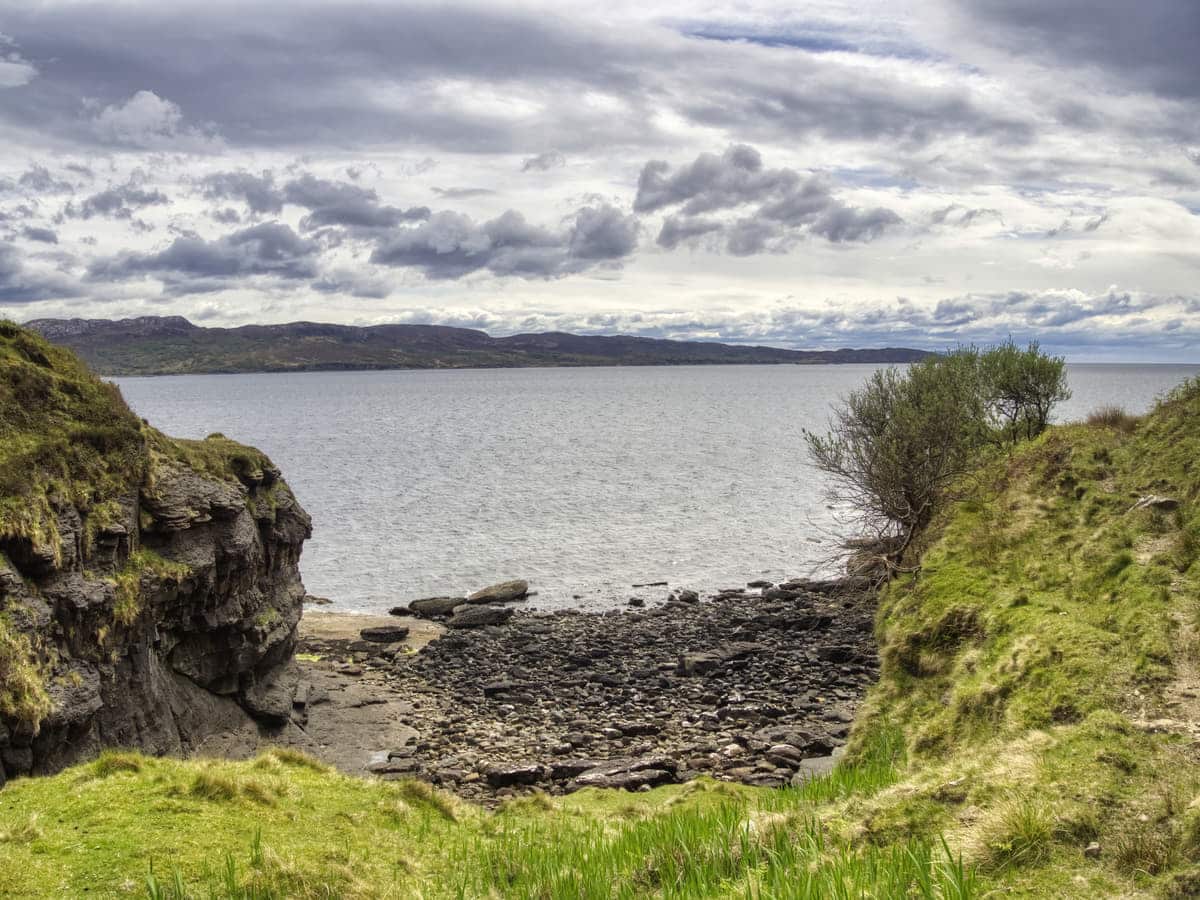
Things to Do
Boreraig Hiking: Embark on a hiking journey through one of the least-visited areas of Skye. The trails provide captivating views of the sea and the ruins of the old clearance village, and the views of Loch Eishort are nothing short of spectacular.
Ruins Exploration: Discover the poignant history of the Isle of Skye by exploring the ruins of Boreraig, a village that was decimated by the Highland clearances of the 1850s. Standing inside the deserted homes offers a haunting perspective on Scotland’s past, but it’s fascinating to imagine how people used to live in such a challenging environment.
Wildlife Spotting: The area around Boreraig is rich in wildlife. Birdwatchers can spot various species such as golden eagles in their natural habitat and there’s a good chance of spotting seals and otters along the shoreline. Binoculars (link to binocular reviews) are essential for a visit to Boreraig.
Photography: The scenic beauty of Boreraig, with its mix of rugged coastline, windswept moorland, and historic ruins, presents ample opportunities for photography. Capture stunning shots of vistas which really come alive during the magical golden hour.
Picnicking: Pack a picnic and enjoy your lunch with an unforgettable view. The area around Boreraig offers several picturesque spots where you can relax and appreciate the scenery, but I highly recommend just finding a rock on the shoreline to sit with your cheese and pickle sarnie. It’s a fantastic way to reconnect with nature.
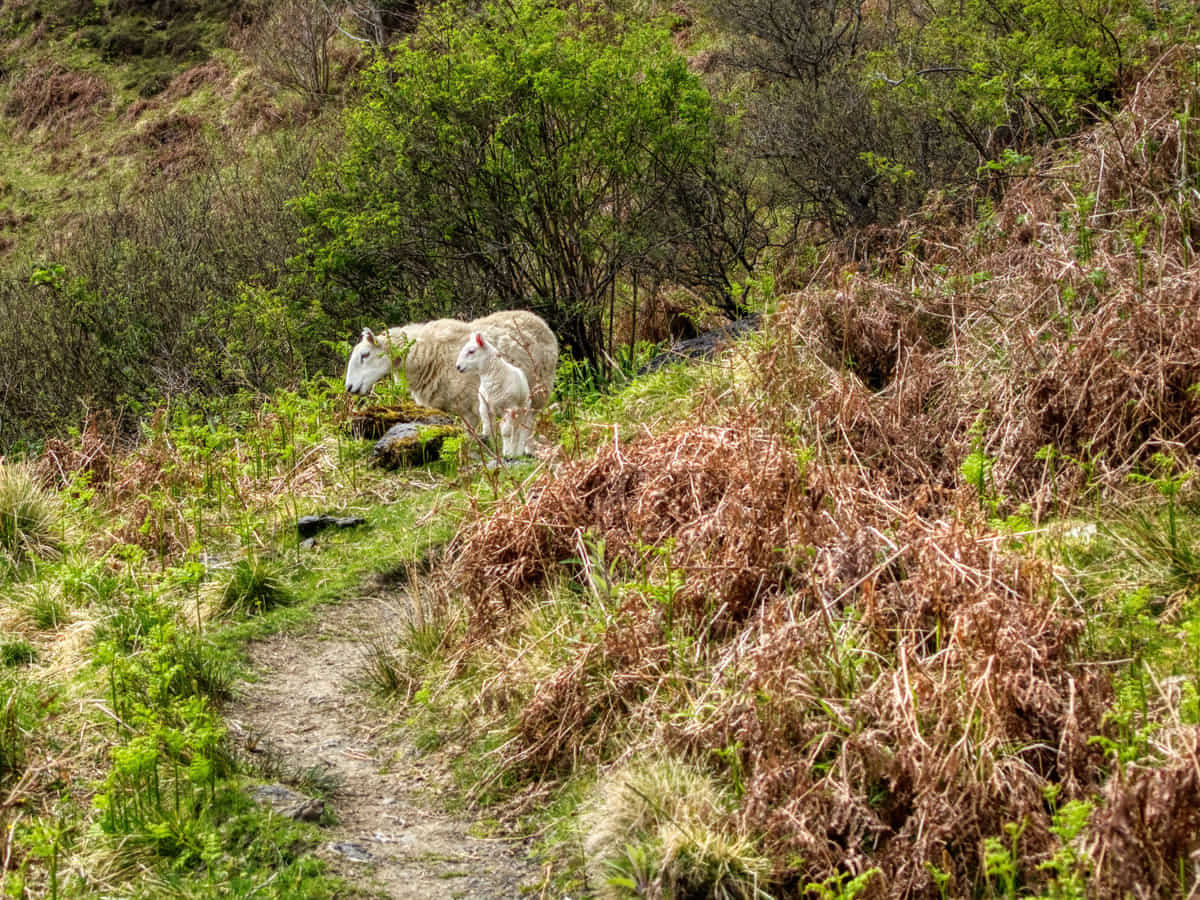
Things to Do Nearby
James Ross Park. Broadford, Isle of Skye, IV49 9AB. Small park near Broadford car park which overlooks Broadford Bay. A footpath runs from the park along the shoreline of the bay heading north to Corry.
Irishman’s Point. Corry, Isle of Skye. A 30-minute walk from Broadford. This small vantage point on the northwest side of Broadford Bay is a popular area for walking. There are rough footpaths along the shoreline heading west which offer superb views of the Isle of Scalpay.
Ashaig Beach. A87, Isle of Skye, IV42 8PZ. 8-minute drive. A small beach that backs an aerodrome. The shallow water of the inlets surrounding the beach is a popular spot for kayaking.
Beinn na Caillich. Isle of Skye, IV49 9AL. This mountain is one of the Red Cuillins. It has an elevation of 2,402 feet and is designated as a Graham. The horseshoe-shaped walk to the summit is superb, though some scrambling is required towards the top.
Isle of Scalpay. Isle of Skye, IV49 9BS. Scalpay is situated offshore of the mainland, north of Broadford. It is simple to access by kayak because it is only 1,000 feet across Loch na Cairidh at its closest point.
Frequently Asked Questions
Where is Boreraig?
Boreraig is located on the shore of Loch Eishort on the Isle of Skye, approximately 4.5 miles south of Broadford.
Address: Isle of Skye, IV44 8RN.
There are no roads leading to Boreraig and access is only possible via Loch Eishort or a footpath that runs from Broadford.
Where did the Highland Clearances take place?
The Highland Clearances took place primarily in the Scottish Highlands and Islands, as they were the stronghold of militaristic Scottish clans who posed a threat to the British government.
In the Western Isles, crofting communities were the dominant social system. Many of these crofters had no formal leases for the land they worked on, so when their landlords evicted them, they had no choice but to move.
What were the Highland Clearances?
The Highland Clearances took place in the 18th century in the aftermath of the failed Jacobite uprising. The clearances were an act of retribution by the British government to eradicate further uprisings by bringing an end to the Scottish clan system.
In addition to banning the wearing of clan colours and taking power away from clan chiefs, many Highland and island people were forcibly evicted from their homes.
Are there any Highlanders left in Scotland?
‘Highlanders’ is a general term given to people who live in the Scottish Highlands, although the name is mostly associated with Scottish clans.
The total population of people currently living within the Highland council region is around 240,000, however, there are more people bearing clan names living overseas than there are in Scotland.

